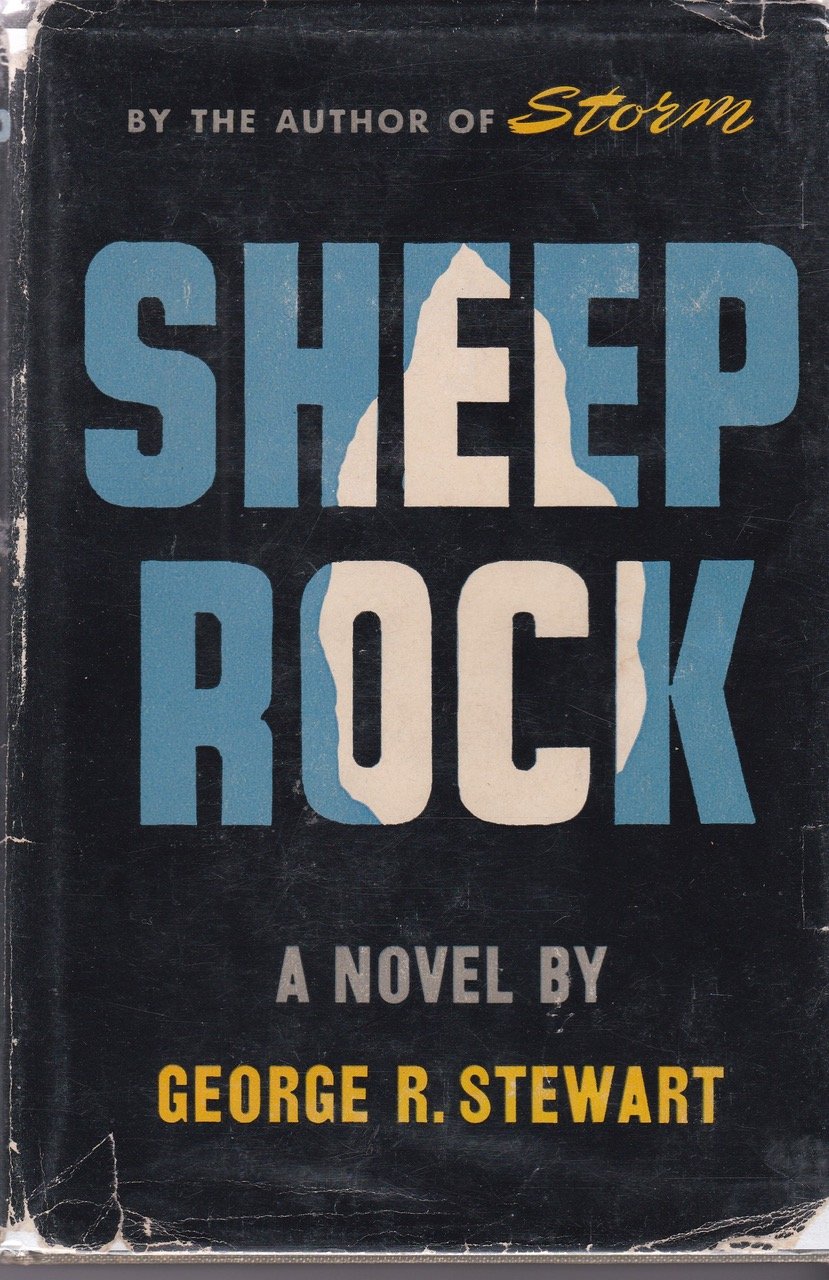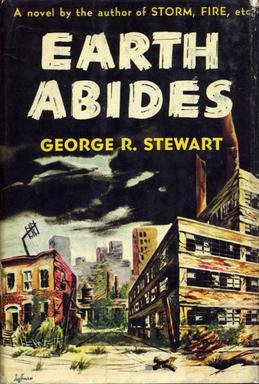Nevada’s Places Underlie Several Ecological Novels of George R. Stewart
By Donald M. Scott
In April MGM+/Amazon Studio will begin filming a mini-series version of George R. Stewart’s ecological novel, Earth Abides—a milestone in the rediscovery of the pioneering ecological author who was inspired by Nevada. Earth Abides was recently re-printed with an Introduction by award-winning author Kim Stanley Robinson, who wrote a fine summary of Stewart’s life and work. Similarly, 2023’s re-issue of Stewart’s Storm by the New York Review of Books Press (originally published in 1941) has an excellent Introduction by environmentalist author Nathaniel Rich. Stewart’s eco-novel Fire will also be reissued in August 2024 by the NYRB Press. Doug Nichol, whose film California Typewriter was considered for Best Documentary, is filming a documentary about Stewart’s work, which will include several Nevada locations.
Photo courtesy of Donald M. Scott. George R. Stewart waits at George R. Stewart Trail dedication, 1974. Thornton Beach Ranger Don Scott reads from Earth Abides.
Stewart wandered the byways, highways, and wagon trails of northern Nevada for decades. The wanders led to a set of ideas advanced for the time, which he wrote into his books. For example, in 1936’s Donner Party history, Ordeal By Hunger, Stewart wrote, “I consider the land [ecosystem] to be a character in the work.” Other Stewart works with Nevada settings include Storm (first ecological novel), U.S. 40, and The California Trail.
Stewart’s ecological novel, Sheep Rock, is Nevada’s own. Set not far from my writer’s desk, it’s a remarkable work of literary art based on interdisciplinary field research by Stewart and University of California, Berkeley, colleagues. At the conclusion Stewart steps out of the novel to explain how he wove that research into literary art. In A Light in the Darkness, Julian Kilker of the University of Nevada, Las Vegas, praises the book as a model for other interdisciplinary works. It’s also been called the first post-modernist novel.
Earth Abides has no Nevada landscapes, but it’s his greatest work, in continuous print for 75 years. And it can change lives. Jimi Hendrix was inspired by the novel to compose Third Stone From the Sun. Grammy-nominated Philip Aaberg wrote Earth Abides, the soundtrack for a National Geographic special. Authors Christopher Priest (The Prestige) and James Sallis (Drive) honor its influence. Stephen King’s The Stand is based partly on the novel.
Many of Stewart’s books have similar power. Larry McMurtry, William Least Heat Moon, Wallace Stegner, Kim Stanley Robinson, and others have written Stewart, openly or subtly, into their creative works. Walt Disney was so impressed by Stewart that he hired him as a consultant and later filmed Storm and Fire for TV.
If you read his books, like the page-turner ecological novels mentioned earlier, and want to learn more, here are some recommended resources:
· The second largest collection of Stewart materials is in the University of Nevada, Reno’s, Special Collections.
· The GRS weblog has hundreds of posts about Stewart’s life and work.
· Nevada also has the landscapes that inspired many of his works. If you decide to seek out Sheep Rock or Gravelly Ford, you will find yourself in the footsteps of many others who have sought Stewart’s Nevada places.
· The Life and Truth of George R. Stewart: A Literary Biography of the Author of Earth Abides, my well-received book, dives deeply into Stewart’s life and work.
The MGM+ Earth Abides mini-series and Doug Nichol’s new film about Stewart are scheduled for release in late 2024.
Donald M. Scott taught high school, adult school, and community college. He also worked as a National Park Ranger and the NASA state educational representative for Nevada and other states as well as caretaker for historic Walking Box Ranch. A published writer, Scott lives in Carson City. For more information about Scott and his work visit georgestewart.wordpress.com.
Double Down blogger photo courtesy of Donald M. Scott. Photo taken at the Historic Walking Box Ranch.




